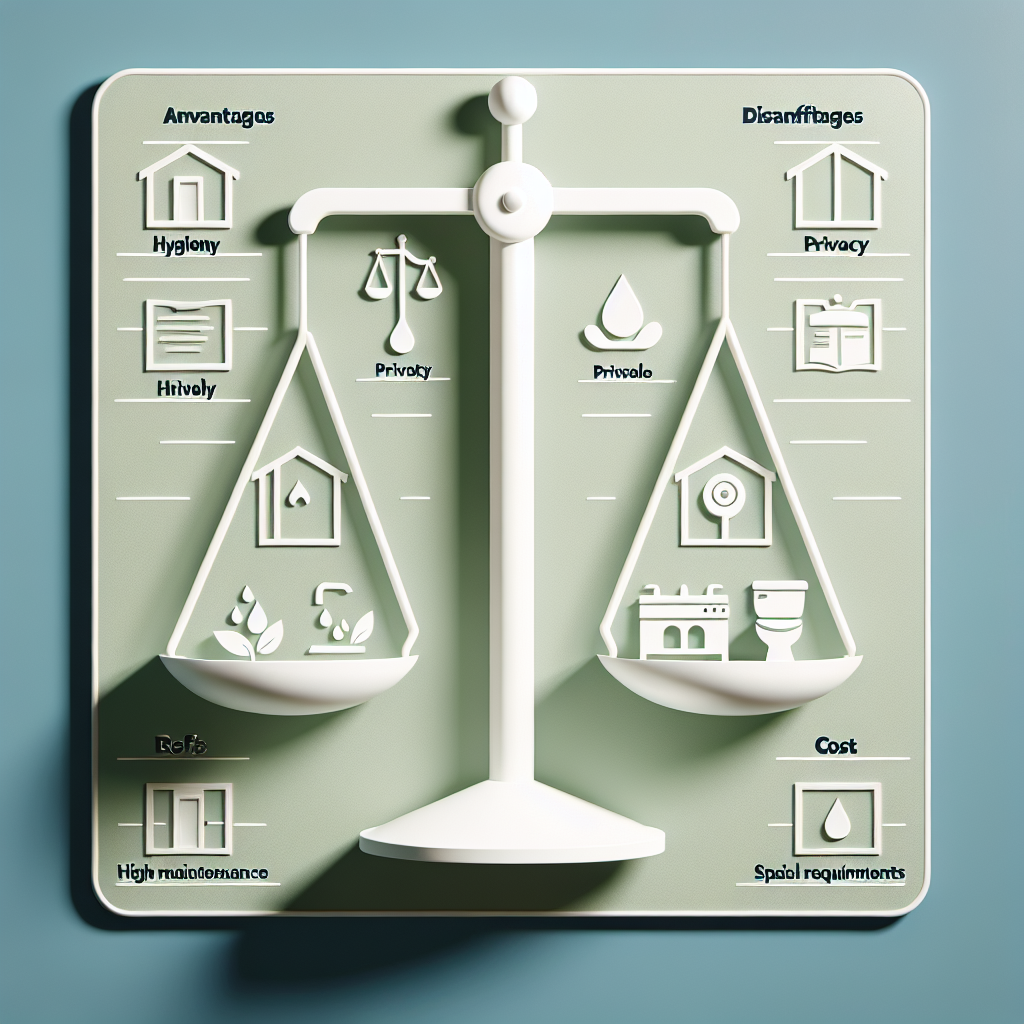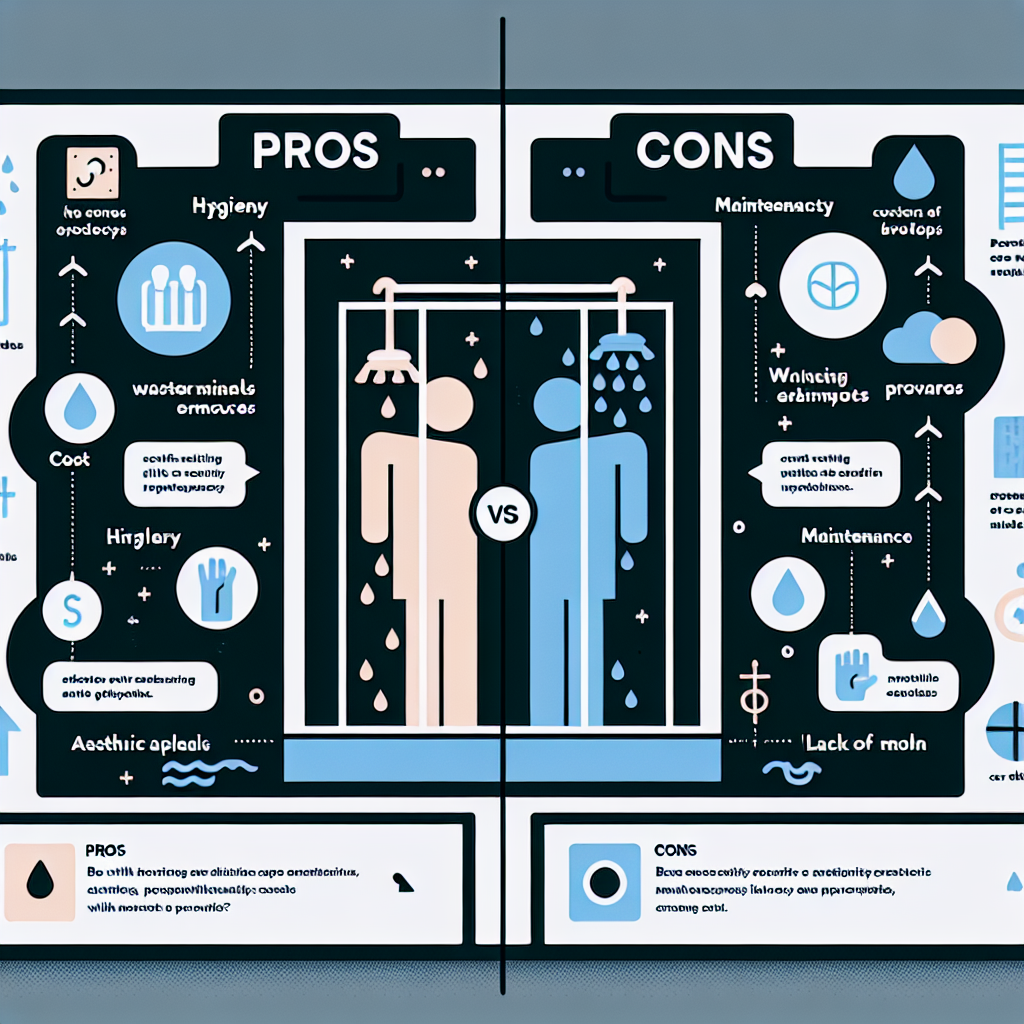Pros and Cons of Shower Enclosures

Shower enclosures have become increasingly popular in modern bathrooms due to their sleek design and functionality. They offer a range of benefits, but also come with some drawbacks. In this article, we will explore the pros and cons of shower enclosures, providing valuable insights to help you make an informed decision for your bathroom renovation or construction project.
Pros of Shower Enclosures
1. Enhanced Aesthetics
One of the main advantages of shower enclosures is their ability to enhance the overall aesthetics of your bathroom. With various designs, materials, and finishes available, you can choose a shower enclosure that complements your bathroom’s style and creates a visually appealing focal point. Whether you prefer a frameless glass enclosure for a modern and minimalist look or a framed enclosure for a more traditional feel, there are options to suit every taste.
2. Increased Privacy
Privacy is a crucial factor for many individuals when it comes to showering. Shower enclosures provide a level of privacy that is not always achievable with open showers or curtains. The enclosed space ensures that water splashes are contained within the shower area, preventing water from reaching other parts of the bathroom. This not only keeps the rest of the bathroom dry but also provides a sense of privacy while showering.
3. Easy Maintenance
Shower enclosures are designed to be easy to clean and maintain. Most enclosures are made from materials such as glass or acrylic, which are resistant to stains and mold. Additionally, many modern shower enclosures feature special coatings that repel water and prevent the buildup of soap scum and mineral deposits. This makes cleaning a breeze, saving you time and effort in the long run.
4. Improved Functionality
Shower enclosures offer improved functionality compared to traditional open showers or curtains. They provide a dedicated space for showering, separate from the rest of the bathroom. This allows multiple individuals to use the bathroom simultaneously, as one person can shower while another uses the sink or toilet. Furthermore, shower enclosures with built-in shelves or niches provide convenient storage for toiletries, eliminating the need for additional storage solutions in the bathroom.
5. Increased Property Value
Investing in a high-quality shower enclosure can significantly increase the value of your property. Potential buyers often consider the bathroom as one of the most important rooms when making a purchasing decision. A well-designed and functional shower enclosure can make a positive impression and add a touch of luxury to your bathroom, making your property more attractive to potential buyers.
Cons of Shower Enclosures
1. Limited Space
Shower enclosures can take up a significant amount of space in your bathroom, especially if you opt for larger or custom-designed enclosures. This can be a disadvantage if you have a small bathroom or limited floor area. It is essential to carefully measure your bathroom and consider the available space before choosing a shower enclosure to ensure it fits comfortably without making the room feel cramped.
2. Higher Cost
Compared to open showers or curtains, shower enclosures can be more expensive. The cost of a shower enclosure depends on various factors, including the size, design, materials, and additional features. Frameless glass enclosures, for example, tend to be pricier than framed enclosures. However, it is important to consider the long-term benefits and durability of shower enclosures, as they can be a worthwhile investment that adds value to your home.
3. Installation Complexity
Installing a shower enclosure can be more complex than installing an open shower or curtain. It often requires professional assistance to ensure proper installation and prevent any leaks or structural issues. Improper installation can lead to water damage, which can be costly to repair. Therefore, it is recommended to hire experienced contractors or installers who specialize in shower enclosure installations to ensure a seamless and watertight result.
4. Maintenance Requirements
While shower enclosures are generally easy to clean and maintain, they still require regular upkeep to keep them in optimal condition. Glass enclosures, in particular, may require occasional cleaning to remove water spots or soap residue. Additionally, the hinges, seals, and other hardware components of the enclosure may need periodic inspection and maintenance to ensure they function properly and prevent any leaks.
5. Limited Design Flexibility
Although shower enclosures offer a wide range of design options, they may not provide the same level of flexibility as open showers or curtains. The size and layout of your bathroom may limit the types of enclosures you can install. Additionally, if you have specific design preferences that are not readily available in the market, custom-designed enclosures can be more expensive and may require longer lead times for manufacturing and installation.
Frequently Asked Questions about “Pros and Cons of Shower Enclosures”
1. Are shower enclosures suitable for small bathrooms?
Shower enclosures can be suitable for small bathrooms, but it is crucial to choose the right size and design. Opting for a compact enclosure or a corner enclosure can help maximize space utilization. Additionally, choosing a frameless or transparent enclosure can create an illusion of more space, making the bathroom appear larger.
2. Can shower enclosures be installed in older homes?
Yes, shower enclosures can be installed in older homes. However, it is important to assess the structural integrity of the bathroom walls and floors before installation. In some cases, additional reinforcement or modifications may be required to ensure the walls can support the weight of the enclosure. Consulting with a professional contractor or structural engineer is recommended to determine the feasibility of installation in older homes.
3. How long do shower enclosures typically last?
The lifespan of a shower enclosure depends on various factors, including the quality of materials used, maintenance practices, and frequency of use. On average, a well-maintained shower enclosure can last anywhere from 10 to 20 years. Regular cleaning, proper ventilation, and prompt repairs of any damages or leaks can help prolong the lifespan of the enclosure.
4. Can shower enclosures be customized to fit specific design preferences?
Yes, shower enclosures can be customized to fit specific design preferences. Many manufacturers offer a range of customization options, including different glass types, finishes, hardware, and configurations. However, it is important to note that custom-designed enclosures may come at a higher cost and may require longer lead times for manufacturing and installation.
5. Are shower enclosures water-tight?
Shower enclosures are designed to be water-tight when properly installed and maintained. However, it is essential to ensure that the enclosure is installed by experienced professionals who follow industry best practices. Regular inspection of the seals, hinges, and other hardware components is also recommended to identify and address any potential leaks or water damage.
Summary
Shower enclosures offer numerous advantages, including enhanced aesthetics, increased privacy, easy maintenance, improved functionality, and increased property value. However, they also come with some drawbacks, such as limited space, higher cost, installation complexity, maintenance requirements, and limited design flexibility. It is important to carefully consider these pros and cons when deciding whether to install a shower enclosure in your bathroom. By weighing the benefits against the drawbacks and considering your specific needs and preferences, you can make an informed decision that will enhance the functionality and appeal of your bathroom for years to come.

